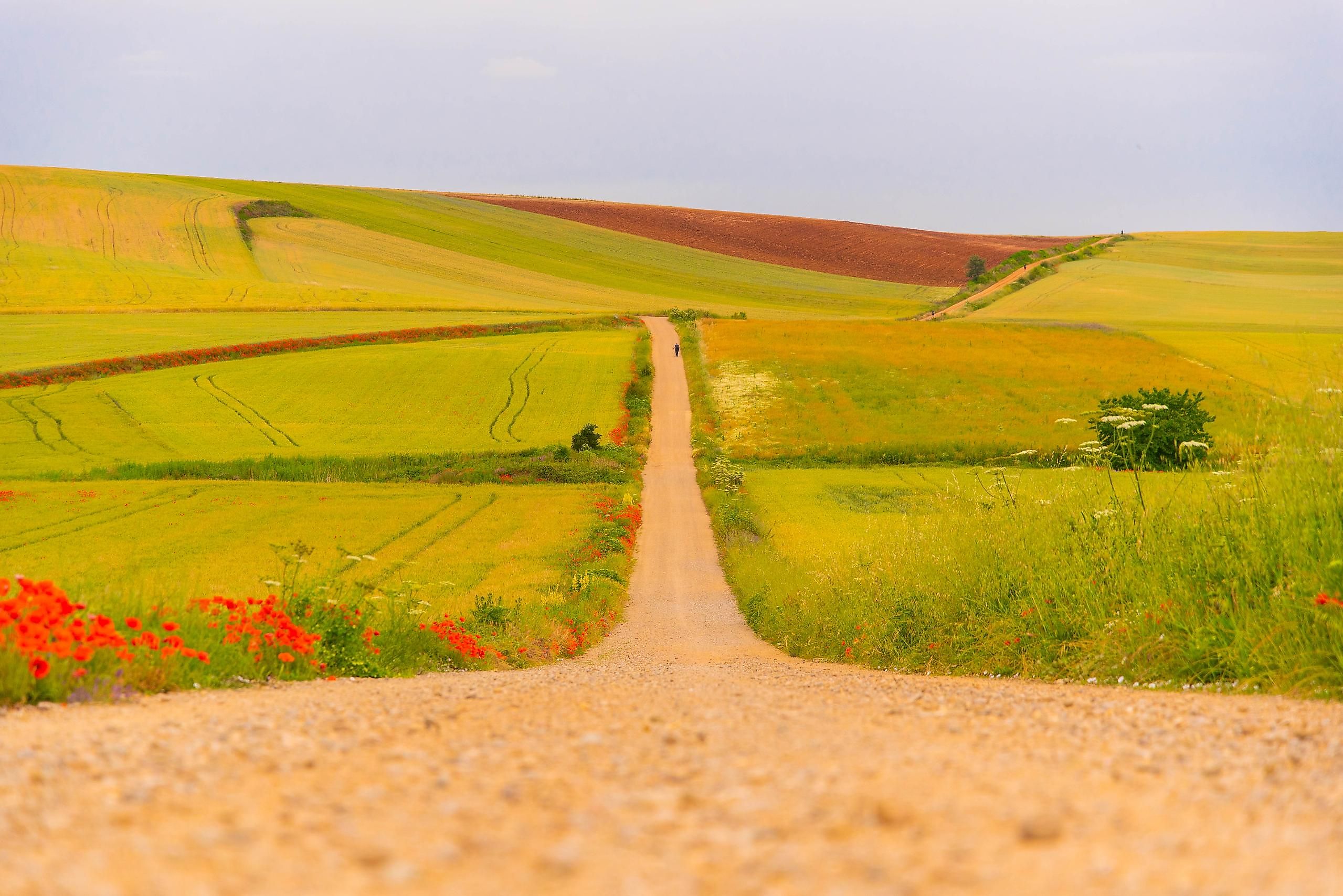
10 Charming Towns Along The Camino Francés
The Camino Francés, or French Way, is the most-frequented pilgrimage of the ancient Camino de Santiago network. Traversing Northern Spain – from the Pyrenees to the heart of Galicia – it covers several autonomous communities, ancient kingdoms, distinct landscapes, and memorable small towns. Last year, over 430,000 people strolled into Santiago de Compostela (i.e. the traditional endpoint), with the majority of them utilizing at least a portion of the Camino Francés to get there. But despite the popularity, each individual pilgrimage is unique.
Everyone moves at different rates, and makes either pre-planned, or instinct-driven decisions when alternative paths present themselves. As such, the many enticing towns along the way may receive pilgrims for a simple coffee break, a lunch stop, for a night (or two), or not at all. Therefore, I wanted to offer ten suggestions for planned pit-stops along the Camino Francés that are based on my own recent off-season pilgrimage. These spots are beautiful, historically-significant, and/or generally fulfilling in a variety of other respects. For the sake of practicality and participation, this article will mostly highlight the substantial hubs, rather than fixate on secluded villages. Buen Camino!
Saint-Jean-Pied-de-Port
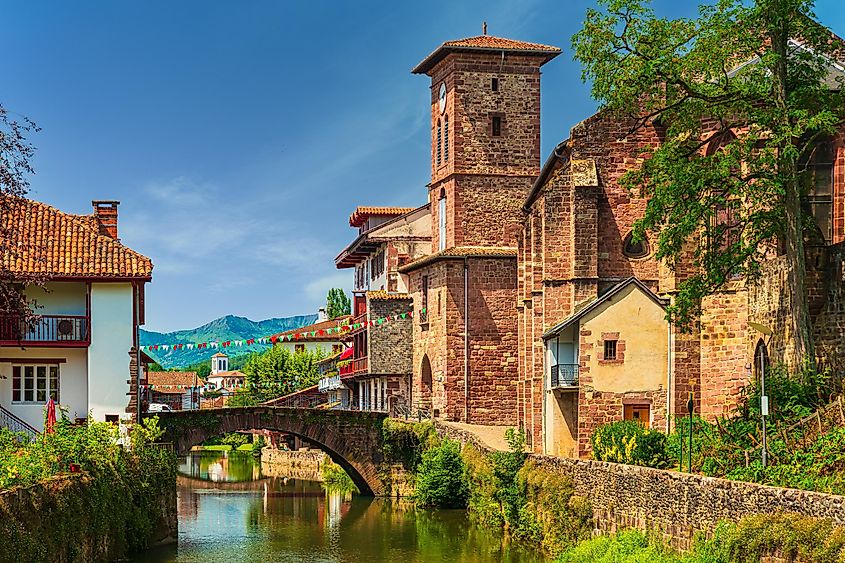
This historic mountain village in French Basque Country is the traditional starting point of the Camino Francés, and our only entry outside of Spain. It not only sends pilgrims off on what is both the hardest and most scenic day of the entire journey (i.e. ascending the Pyrenees via Roncesvalles Pass), but also unites several lesser-known and disparate routes from within France. The result: tired travelers stop in St.-Jean-Pied-de-Port to rest, joining fresh, smiling pilgrims in the albergues, family-run restaurants, and the cobblestone streets of the 12th-century Old Town. A brief hike to the hilltop citadelle provides a bird's-eye-view of the rust-red roofs, determined perimeter wall, and surrounding mountains, as well as historical perspective courtesy of the signs posted at each overlook.
Pamplona
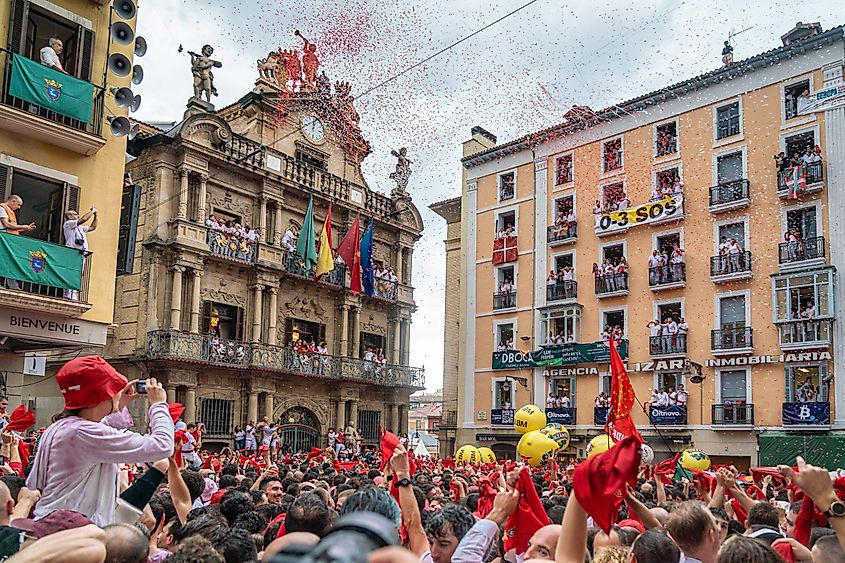
Pamplona, capital of the Spanish autonomous community of Navarra, is the first major town after setting forth from SJPP. Because it is a much easier place for international travelers to access, it is also a common starting point for pilgrims walking the Camino Francés. But Pamplona is a one-of-a-kind tourist destination unto itself. Here, during the summer festival of San Fermín, the bulls famously charge through the streets as hundreds of daredevils dressed in white and red sprint to evade them. And this is just the daily morning kick-off to what is essentially a week-long party. Pamplona is also beloved for its pintxos (the regional equivalent of tapas), which are served in bars throughout the three boroughs comprising the attractive Old Town (Casco Antiguo). Raise a glass to the ghost of Ernest Hemingway at Cafe Iruña – a place he frequented, and used as a setting in his novel: The Sun Also Rises (aka Fiesta).
Nájera
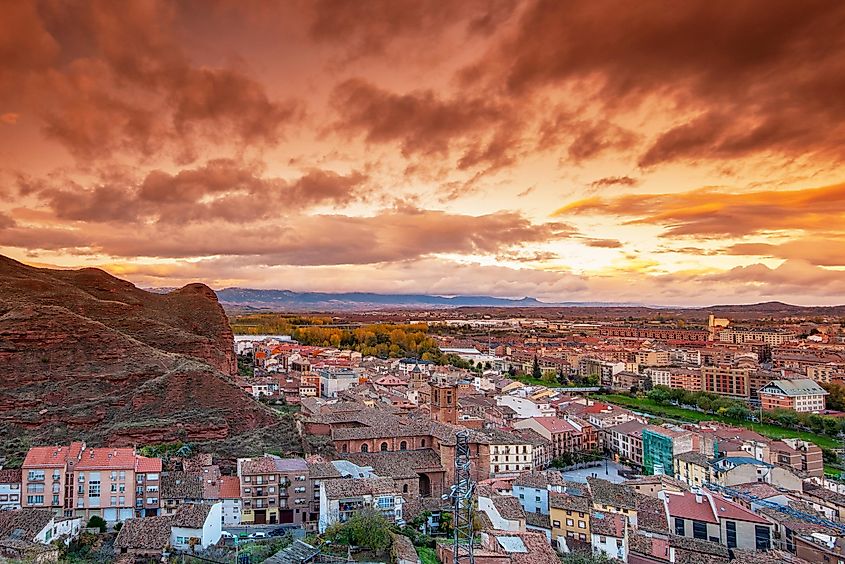
Nájera is a colorful standout of the small autonomous community of La Rioja. This former capital of the Kingdom of Navarre sits on the river Najerilla, in the Rioja Alta region, at the foot of the red cliffs of the Malpica Crag. Look closely and you will see some of the 136 man-made caves within the sheer slopes. La Rioja is known for its distinctly auburn soil that not only signals an intriguing environmental transition, but later proved to produce high-quality vino. Rioja wines bear the Denominación de Origen (Destination of Origin) status, and are sure to elevate one's visit to Nájera. The town itself reflects the aesthetic of the land – adding in tasteful accents for a feel and aesthetic not duplicated anywhere else on the trail. Take a moment to appreciate this town, and the region as a whole, for it will soon give way to Castilla y León – the prairie portion that dominates the majority of the Camino.
Burgos
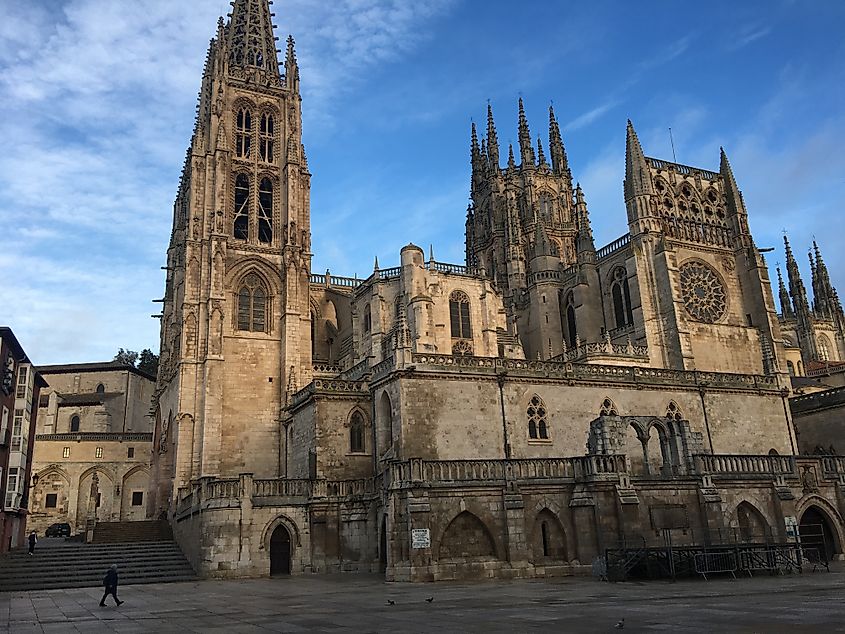
Burgos injects a welcomed dose of culture and energy into the mix before casting pilgrims into the flat, ubiquitous, and seemingly never-ending Meseta Central (plateau) section of the Camino Francés. Some pilgrims actually end their journey at the Cathedral of Saint Mary of Burgos (a UNESCO World Heritage Site) after partaking in the special Camino mass, while plenty of greenhorns take the train in from Barcelona or Madrid to begin their sojourn here. The action once-again centers around the Old Town. Make for the Plaza Mayor, and then aimlessly cast yourself into the side streets, dipping in and out of tapas bars as you please. If you have the time (many pilgrims opt for a day of rest when they reach Burgos), stroll a few minutes East along the Rio Arlanzón to visit the Museo de la Evolución Humana (the Museum of Human Evolution). Pilgrims get a discount, but everyone can appreciate the chronological layout that begins with the earliest European human ancestor remains (found at the nearby site of Atapuerca), and fills in the known gaps up to present day.
León
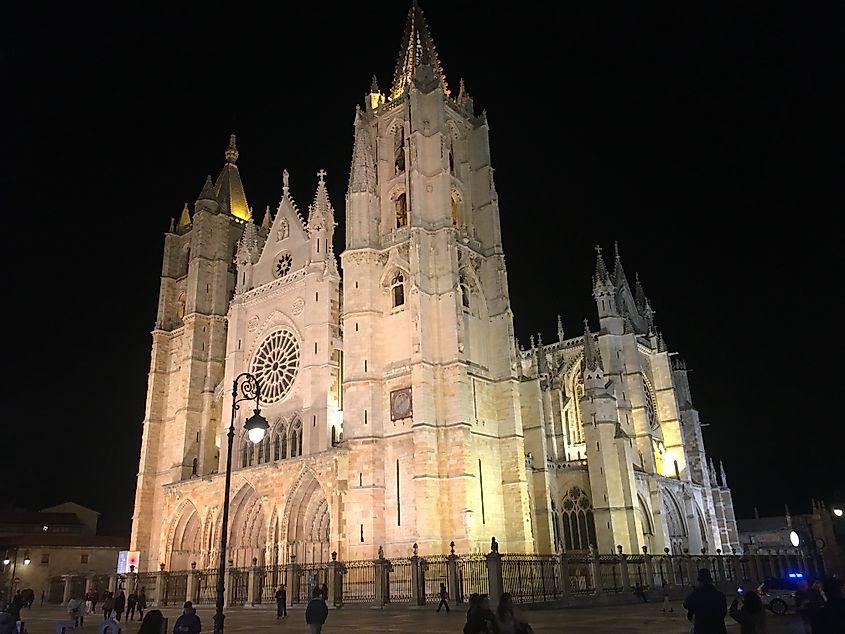
The next major hub after Burgos is León: the capital of the province by the same name. Now a large city with a considerable industrial portion around the perimeter, León can be evaluated in two ways: as a whole, or for its antiquitous and charming core. Given that the Camino Francés is all about honoring the spiritual pilgrimage that began in the Middle Ages, I think it makes sense to focus on the latter: Within the stalwart Roman walls, the grand Cathedral, which is illuminated in gold light each evening, shines the spiritual beacon, while El Humedo (The Wet District) plugs tourists into the culture of late-night drinks and tapas. The Old Town network oscillates between large pedestrian shopping streets and narrow twisting alleys that lead to all kinds of treasures.
Astorga
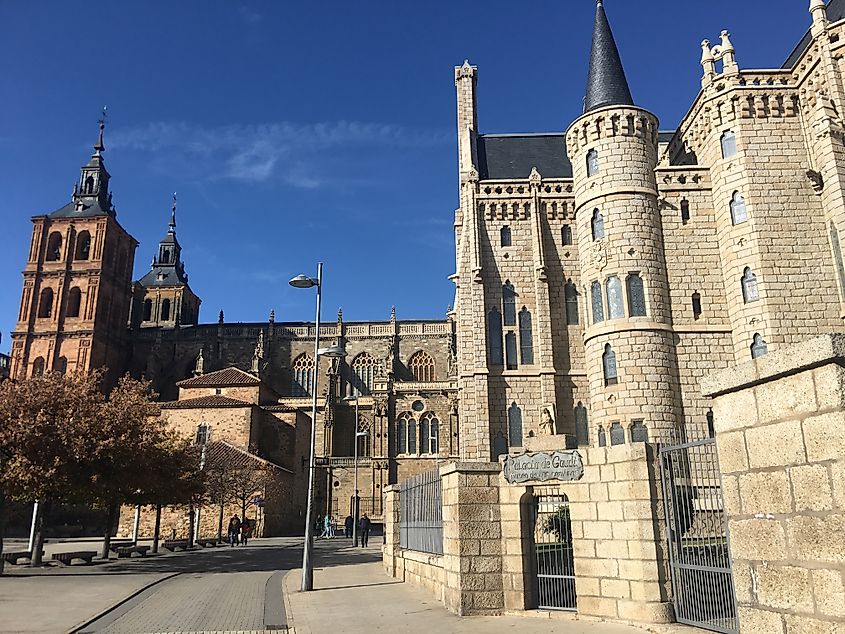
Astorga is an enchanted walled town on a hill that welcomes pilgrims from two routes: the East-West Camino Francés, and the South-North Via de la Plata (Silver Route) – a former Roman trade road. The focal point of Astorga, which is the capital of the traditional county of Maragatería (itself within the province of León, in the autonomous community of Castilla y León), is the one-two punch of the Santa Maria Cathedral and adjacent Episcopal Palace. The former was built in various styles between the 15th and 18th centuries, and the latter was designed by famous Modernist architect, Antoni Gaudí – one of only three of his creations that exist outside of Catalonia. Otherwise, the Plaza Mayor, as with most beautiful Spanish cities, is a go-to place to congregate. The 17th-century, Baroque-style Town Hall is surrounded by cafes, and the open-air Roman ruins are but a block away.
Ponferrada
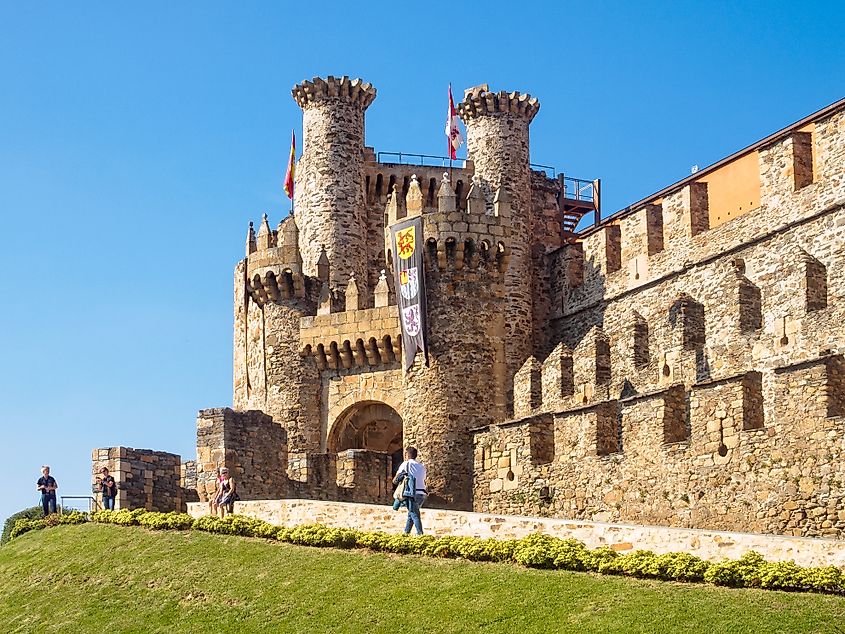
Another top-tier architectural/historical draw on the Camino Francés is the Templar Castle of Ponferrada (Los Templarios Castle). Gifted to the Knights Templar (Order of the Temple) by King Afonso IX in 1211, Ponferrada sprouted into a well-fortified settlement that granted safe passage to early pilgrims. The crowning achievement of the town was, and remains to be, the 8,000 square-meter (86,000 square-foot) castle, which was built in stages over the centuries. Visitors can tour the inside, which houses the 1,400-book Templars' Library, as well as the Ponferrada Investigation and Study Center. At the same time, simply taking a coffee on one of the surrounding terraces is a great way to enjoy the quintessentially-medieval facade.
Villafranca del Bierzo
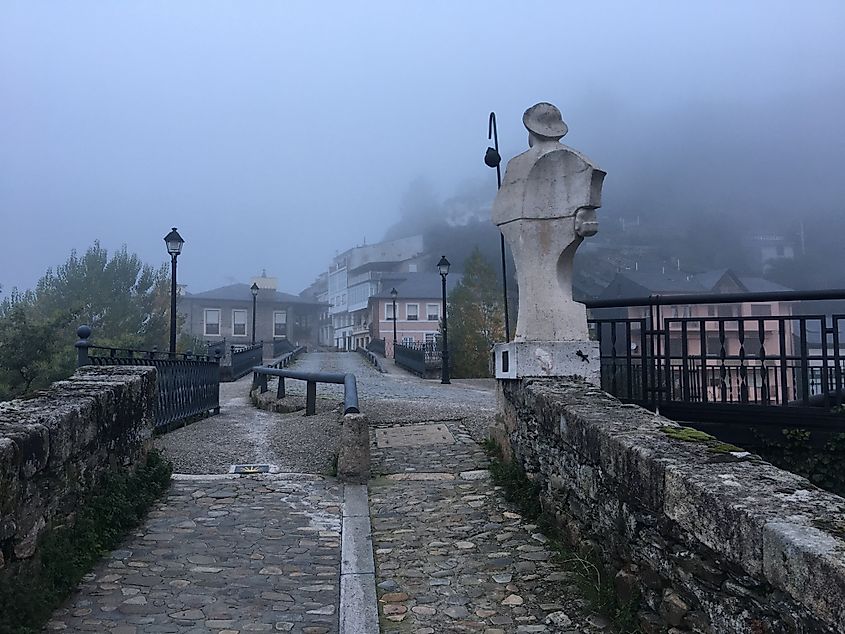
The last major stop in the province of León offers a valuable respite before the epic climbs to O Cebreiro begin. Villafranca del Bierzo, which lies in the traditional comarca of El Bierzo, on either side of the Rio Burbia, is a quaint and mysterious place. When I was there, a blanket of late-afternoon fog had descended, making the patient houses, the Marqueses de Villafranca Castle, the cobblestone streets, and the medieval bridge (guarded by a stoic pilgrim statue) emerge slowly, and dramatically. Enjoy a hearty dinner by the river, where set-menu dinners are offered to any hungry takers, pilgrim or otherwise. Fuel up, and prepare for the transition into the final autonomous community of the pilgrimage: Galicia.
Portomarin
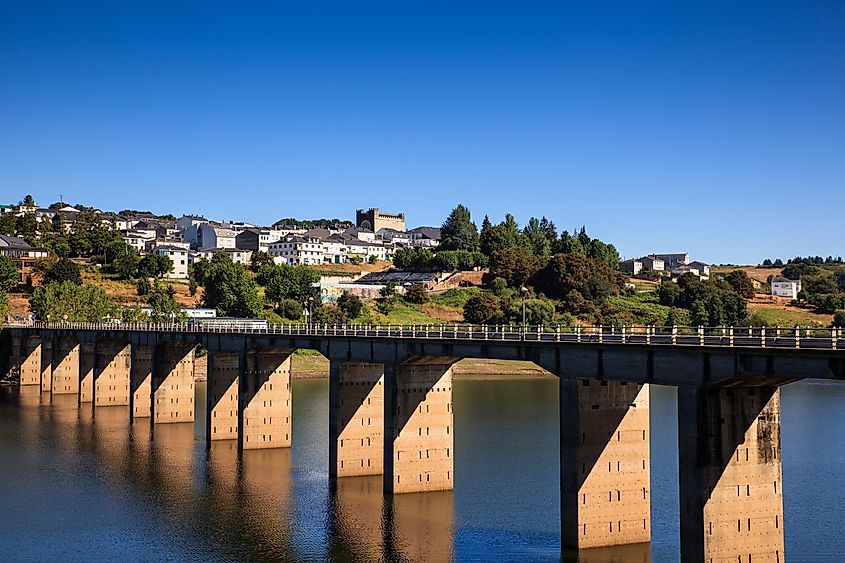
The Camino de Santiago generally falls into two categories: routes that hug the coast or ones that explore the countryside. The Camino Francés falls into the ladder. It is golden, and green, and mountainous at times. However, almost none of the towns, even though they predominantly settled on rivers, feel like they are "on the water." Portomarin and the forthcoming entry are the two main exceptions. The Galician village of Portomarin was built on the North Shore of the Rio Miño, where, incredibly, it was moved, brick by brick, from its former location (i.e. the site of the current, planned reservoir). The result (which occurred in the 1960s), was an inland waterfront town that refreshes pilgrims late in their journey. Cozy up in one of the hillside restaurants and enjoy the Galician specialty menus (which, quite appropriately, include more seafood)
Finisterre
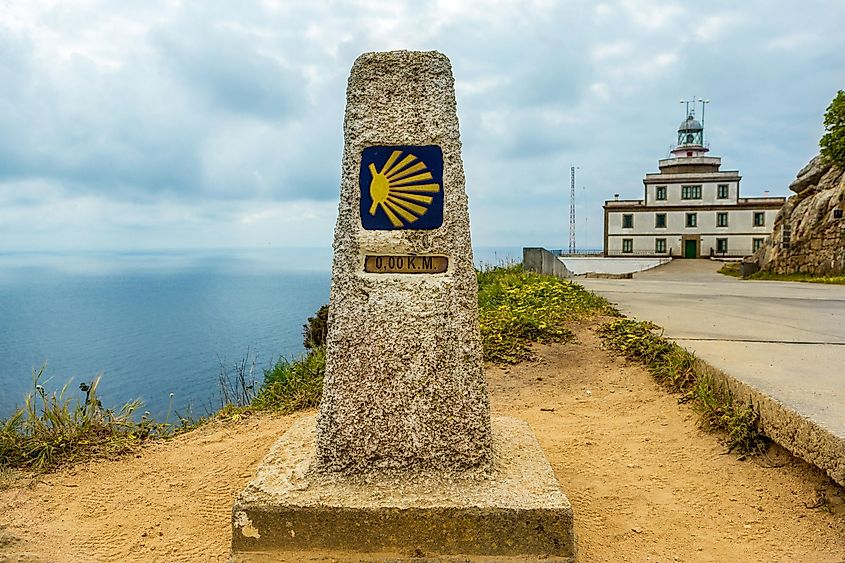
Since all roads lead to Santiago de Compostela (i.e. the alleged final resting place of Apostle St. James), I will bypass this as a suggestion, and instead encourage pilgrims to soldier on to the "End of the World." Less than 90-kilometers beyond the iconic Cathedral/Praza do Obradoiro sits a cozy fishing town near the westernmost point of the Camino Francés. The ancient Celtiberian tribes, Roman invaders, and early Christian missionaries believed this site was the end of the terrestrial planet. Finisterre, which is the name of the cape as well as the town (the latter of which is also known as Fisterra) made sunsets all the more impactful, and to this day, pilgrims and other travelers are drawn to the rocky edge of the North Atlantic Ocean. Whereas once it was marked by a stone temple (Ara Solis), a lighthouse, a 0-kilometer Camino marker, a stone cross, and abandoned sartorial mementos now share the duty.
The Camino de Santiago attracts travelers from all walks of life. Spiritual wanderers, curious sight-seers, foodies, and seekers of many sorts unite on the marked paths throughout Spain, France, Portugal, and beyond. The route across Northern Spain, the French Way, has proven especially enticing for 21st-century pilgrims. While its landscapes are undeniably seductive, some of the best memories will stem from visiting the small towns along the way. These ten towns, in particular, are some of the best the Camino Francés has to offer.











